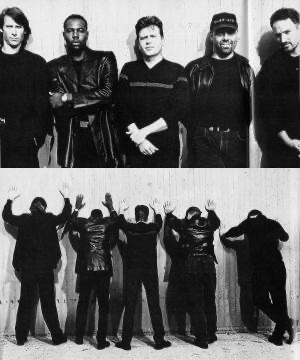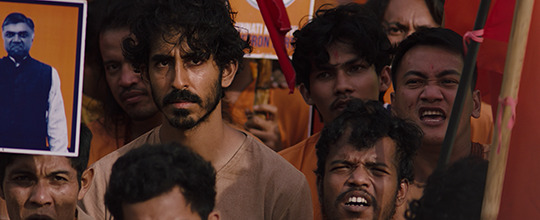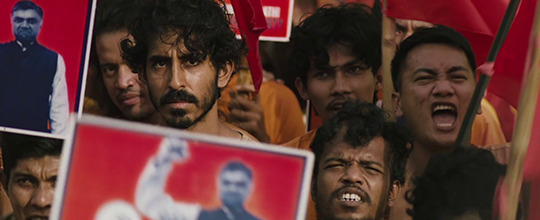#Film-co-production
Explore tagged Tumblr posts
Text

-Si el mundo cree que un zorro sólo puede ser falso y deshonesto... de nada sirve tratar de ser otra cosa.
-Nick, tú eres mucho más que eso.
#Nick & Judy#zootopia#nick wilde#judy hopps#wildehopps#zootropolis#zootopia 2#love#zootopia fanart#disney movie#disney movies#disney animation#disney art#walt disney#disney world#walt disney world#walt disney animation studios#walt disney pictures#walt disney productions#walt disney co#disney#films#movies icons#favorite movies#cinema#movie poster#family movies#family time
10 notes
·
View notes
Text
20th April 2024

I got my exam days wrong!! It’s fine it works in my favour it’s now 30 days until my exam! I have had a busy few days, written a lot of essays and done planning for exam prep. It feels weird how fast it’s all coming to an end. I had work today, and as I was an hour early I just decided to work in the woods before my shift started. I thought it was so pretty and although it was bloody freezing it was still a nice experience lol. I also thought I’d start posting things I do outside of study?? Just bc I think we need to incorporate a balance into our study routines so here’s the plan for today :3
Go to work
Complete a Wuthering Heights essay plan
Do conservatism study
Make flash cards for This Is England
Tidy my room!!
Organise my notes
Things I’ve been enjoying at the moment:
Sherlock & co (an amazinggg podcast pls take a listen, or lmk if you have!)
The Tortured Poets Department
Grand designs 😭
Animal crossing <333
I hope everyone is having a lovely day/ evening 🤍🤍🤍
#a levels#english literature#film studies#literature#politics#study aesthetic#study blog#study motivation#study notes#uk#ttpd#forest#woods#taylor swift#sherlock and co#sherlock & co#calmness#productivity aesthetic#animal crossing#grand designs#Spotify
17 notes
·
View notes
Text
photographer: okay guys we are going to get some good shots of the Propaganda Film Founders, so if you could just all stand against the wall and face the camera *click* okay great! now let’s do a silly one where you all put your hands on the wall to look like you are bing arrested, but no one do a cunty pose okay?
Fincher: haha okayyy (lying)

#WHY IS HE DOING ALL THAT#i just found this gem of a picture today holy shit#if you don’t know propaganda films was a film and music video production company that was co founded by Fincher and this group of guys#they mainly produced music videos but also produced ‘being john malkovitch’#and ‘full frontal’ and ‘the game’ and ‘adaptation’ etc#but the company dissolved in 2002 in pretty sure#random info dump sorry#on the hunt for a Propaganda Films Crew jacket but they were all sold years ago on sketchy websites#so i’m not holding out much hope 😔#david fincher#propaganda films company
12 notes
·
View notes
Text













zamok, aleksey balabanov 1994
#zamok#aleksey balabanov#1994#das schloß#franz kafka#michael haneke#moloch#dune#the bride#der landvermesser#hochzeitsvorbereitungen auf dem lande#herz aus glas#am ende der welt#gotha#material#buw#filmkombinat#big savod and the deep manko#co-production#lenfilm#roskino#bioskop#film fond hamburg#centre national de la cinématographie
1 note
·
View note
Text

A BLATANT LIE
#who thought this??#how did no one catch this?#i don't even know how you make a mistake like this#disney made a bunch of live-action films before the shaggy dog!!#even if we're not counting the rko co-production british films#disney had been making live-action films for several years before the shaggy dog#personal
2 notes
·
View notes
Text
I gotta stop getting into arguments with guys in youtube comment sections.
#a review for poor things popped up on my YT homepage#never seen a video from this channel before#tiny channel maybe 250 subs 700 views#anyway the guy just gave his honest opinion that he didnt enjoy the film because he find yorgos lanthimos's style hard to engage with#but was very complimentary of other aspects#acting costume and production design all that#so a fair review from an average film enthusiast but not an artsy guy#but all the comments before me were dogpiling him over using 'pretentious'#so i just left a mild comment about the negativity and how someone disliking a film you like shouldn't damage your ego so much#and now some dude's writing me essays#(granted my replies are getting pretty long cos HE'S MISSING MY POINT)#like i'm an editor don't try to school me on definitions#i get paid for this shit#anyway i just felt bad for the reviewer. literally all his comments were mean
4 notes
·
View notes
Text
07.11.23
#Mira-Marathon | Harry Potter
Film Name: Harry Potter and the Chamber of Secrets (2002); Production Studios: Warner Bros., Heyday Films, 1492 Pictures, MIRACLE Productions GmbH & Co. KG; Director by: Chris Columbus; Screenwriter: Steve Kloves; Starring: Daniel Radcliffe, Rupert Grint, Emma Watson, Tom Felton, Kenneth Branagh; Genres: Fantasy, Adventure, Family, Detective; Running Time: 2 hours 41 minutes;
In "Harry Potter and the Chamber of Secrets", Harry and his friends return to Hogwarts and encounter a chamber of secrets releasing an ancient evil. They have to fight this threat by adding new characters and an exciting plot to the film. Great acting, impressive special effects, and intense atmosphere make this movie worth watching for anyone who loves fantasy adventures.
My rating: 9/10

#mira marathon#harry potter#film#harry potter and the chamber of secrets#2002#warner bros#heyday films#1492 pictures#miracle productions gmbh & co kg#chris columbus#steve kloves#daniel radcliffe#rupert grint#emma watson#tom felton#kenneth branagh#fantasy#adventure#family#detective#2 hours#9/10
2 notes
·
View notes
Text
WHERE has sexual tension gone???
2 notes
·
View notes
Text
Netflix's Reported Exit from Nigeria: Understanding the Impact and Lessons for the Nollywood Industry
#co-production agreement#content acquisition#economic challenges#film funding#Keywords: Netflix#Kunle Afolayan#local distribution systems#Nigerian film industry#NOLLYWOOD#quality content#subscription growth#Wale Adenuga
0 notes
Text
VIFF 2024 Review: Marlina The Murderer In Four Acts (Marlina si pembunuh dalam empat babak)
Marlina: The Murderer In Four Acts is a thought-provoking drama about Marlina (played by Marsha Timothy, right) and her friend Novi (played by Dea Panendra, left) deal with the mysogyny around them. Not every film at the Vancouver Film Festival is a film from 2024 or 2023. Marlina: The Murdered In Four Acts is an Indonesian film made in 2017. It was one of four films in the Leading Lights…

View On WordPress
#Adi#Ahmad#Astro Shaw#Babak#Cinesurya#dalam#Dea#Egy#Fedly#Film Festival#Four Acts#France#Garin#Hooq#Indonesia#Kaninga#Kaninga Pictures#Malaysia#Markus#Marlina#Marsha#Mouly#Murderer#Nugroho#Panendra#pembunuh#Purin Pictures#Rama#Safira#Shasha & Co Productions
0 notes
Text
we are failing this module ‼️🗣️
#im going to kill my group. our filmings been delayed a full week cos one guy didnt submit the risk assessment on time. thanks lad#in a group meeting that so far has taken 35 minutes to even start to make a production schedule and im on 2 hrs of sleep get me out of here#.log
1 note
·
View note
Text
i need all these ppl in my house to leeeeeaaavvveeeee
#my roommate is doing some film production for school so they've had like 5 actors & helpers staying over for the last 3 days or so#and they've been gone most of the day previously but now they're still heeerrreeee and i want to shower and we have 1 bathroom#they've been staying up hella late and waking up hella early & ive been getting shit sleep cos our house is old & doesn't block sound well#and im introverted as fuck and just want to be home alone 😪#plus my partner's down in portland during the week cause he started his new job but we're not moving until jan#and our cat has NOT been happy about him being gone. like she's mostly attached to me but she loooves her cameron !#so she's been yelling a lot more lol and basically being as obnoxious as possible to convey her discontent#i just. im overdrawn.
0 notes
Text
Rundown of the more interesting parts from the Necrits live stream with Christian Linke (Creative Director and Co-Creator of Arcane) :
There was a longer version of the Caitvi sex scene but they got bonked by the ratings people, and because it would have raised Leagues rating to mature, it got brought down to what we got.
The entire Caitvi sex scene was directed and animated by Fortiche with zero input by Riot. Christian says, "That was French people being French."
Riot making Arcane canon didn't change where they were taking characters or the story, it just made them more aware of how it would affect other Riot projects.
Christian refused to confirm exactly when the events of Arcane take place in the existing timeline.
The Arcane doesn't originate from Hextech. It is just one - in universe - interpretation of magic.
Christian doesn't view Viktor and Jayce's love as romantic, and that romance wasn't the intention when writing their relationship. However, by the way he talks, it doesn't seem he's against people shipping them romantically - just as a creative team, they were more interested in exploring a close, complex male friendship / brotherhood.
The 250-million dollar show budget number is not accurate as marketing is included in that fund. Fortiche's goal from the beginning was to bring the level of animation found in feature animated films to serialised content. While the show was very expensive for an animated series, it was way cheaper than an animated feature film because they try and work efficiently. As an example, Christian says how often in Hollywood, it's not uncommon for sometimes 40-50% of what is animated to end up on the cutting room floor while with Fortiche they try and keep it around 5%
Ekko's hair was changed from a mohawk to dreads because the artist who worked on him told them that black hair doesn't work like that (in reference to the mohwak), and here's how it would actually work.
Legends of Runterra affected Arcane in terms of giving the team inspiration for how the everyday street life is for people in the regions.
Caitlyn's LOR Tactical design (2021) and Warwicks VGU Voicelines (2017) were made to reflect what was going to happen in Arcane - production of Arcane just took a long amount of time.
They've said from the beginning that the only person who could ever defeat Viktor at the height of his power was Viktor himself. His story is about the glorious evolution, the pursuit of that, and what it actually means to remove these human elements until there is nothing left.
All projects Riot is working on - whether the MMO, Games, Written or Animated projects - are in talks with one another at all times.
Christian comments on how very few games have remain in service as long as League has, and because of its ever growing and evolving story, it's hard to bring everything together cohesively since everything was made at different times, in different era's, by a multitude of different people. So, while many things may be very cool creatively, it makes it impossible to successfully bring it all together more often than not. So for new projects, they are more focused on making something good and successful with the team and talent they have, even if it retcons or replaces content made in the past.
Christian pitched singing Heimerdinger.
Arcane's scripts for S2 were locked in before S1 was released, so they were not impacted by fandoms or online reactions. Christian thinks maybe some animation choices were influenced by things the animators saw online, but not the story.
When watching the premier of the final arcane episodes in LA - the entire 4000 seat theatre cheered when Maddie died.
The butterfly motif shared between Jayce and Viktor specifically was used to represent transformation.
Christian talked about how they don't think about really whether people will like something or not, but whether it's the right consequence for the story (this is in discussion to Caitlyn losing an eye). What makes a character likeable to an audience in his eyes is their decisions in the story; the choices that they make.
Continuing on from this, he comments on how the choices Caitlyn makes now are so different now compared to the beginning of the show. She is now willing to take risks and sacrifice parts of herself for people, for Piltover and for what is right.
When asked about Caitlyn's signature hat, Christian says that the team saw it as somthing that didn't really fit this version of Caitlyn they were writing and the person she becomes and that's why it was never incorporated into her designs.
Back in the beginning, when they were first working on Arcane, Christian would constantly going back to Jinx and Vi's original design artists & Riot August who was their champion designer to make sure they weren't messing anything up with these characters.
Christian goes on to tell an anecdote of when Paul 'Zeronis' Kwon was drawing the first concepts for Vi. This was back when Christian was in music. She didn't have a name at the time, but when Christian looked over Paul's shoulder at the art, he comments "she kinda looks like a Violet to me." They never spoke about it, but months later, when she became a serious character concept internally, she was gifted the name Vi. To this day, Christian doesn't know if his comment resulted in her name or if it was just a coincidence, but Violet became stuck in Christian's brain as Vi's true name. Riot August (who was in chat) then confirms that her name came from her tattoo, which came from one of her key design elements, being that she had the number 6 on her face. So, just a happy coincidence.
Talking about the tattoo. The tattoo was shrunken in size so, from a distance, it would look more like a beauty mark and the brain can more easily disregard it. One of the many things that they had to think about when translating the designs over as, is animation, you would be looking at a characters face a lot more than you do in league where the camera is situated top down.
As they were wrapping up the stream, Christian talks about how there always needs to be a bit of space between what content creators / content consumers do (pointing at Necrit) and what Riot does. He thinks it's good that there is space for criticism and a critical view of the things Riot does. In order to succeed, he believes they need to listen to their audience but also that they need to have their own vision, take risks, and be bold. It's a delicate balance in his eyes, and projects tend to fail when these two sides are too in cahoots.
He iterates that they are not trying to shove anything down anyone's throats. They are just trying to find what makes these characters cool, tell their stories, and be true to the regions they come from. With taking the characters from League to Arcane, it was important that they translate these stories and characters so they can hold up with the best storytelling in the world.
This circles back to the earlier point about retconning things and replacing past stories and content. He comments on how some characters are very outdated or too archetypal, but they still have an essence that people love about them.
Arcane was something Christian worked on for 9 years, and he was getting clearly emotional near the end. He also adds they're just getting started and he wants to make sure they do a good job with this IP and the characters we really love.
To those who are not happy with certain decisions, he's sorry they didn't hit what you personally wanted, but there is simply no way they can please everybody. While they are trying to make as many of the Riot / Arcane audience happy, they as the creators and artists need to follow their own compass, be the shepherds of this IP; that being creative is hard. They will keep doing that even if they sometimes have to ruffle some feathers.
He closes the stream by confirming that they are investing quite a bit in Noxas, Ionia, and Demacia for the next regions they explore.
#had fun writing this out#made me actually watch the entire live stream and pay attention#league of legends#arcane#caitvi#jayvik#ekko arcane#warwick#caitlyn kiramman#jinx#vi#arcane vi#ekko#caitlyn#legends of runeterra#arcane jinx#arcane caitlyn
3K notes
·
View notes
Text

Every Film I Watch In 2023:
208. Forgotten (2017)
#forgotten#forgotten (2017)#2023filmgifs#my gifs#holy christ that was an unnecessarily brutal ending#but i really enjoyed the second half of the film#mostly cos i guessed all the twists#the first half i had concocted an entire different theory#though i did guess the initiating trauma#the production design of that house was fascinating#with all the lines and geometric shapes#but no this was not the korean horror i expected from the poster#this was instead a very intense korean thriller
0 notes
Text
Truths that Co-Exist
Barbie (2023) is a giant product placement that profits off nostalgia.
The writing is profound and life-changing and understands why we seek nostalgia in a way most nostalgia-driven entertainment doesn’t.
The film is self-aware about how even now, Barbie dolls set incredibly unrealistic beauty standards. Their “body diversity” does not even scratch the surface of what that phrase really means. I don’t expect this to change.
The film still made a beautiful statement with the scene on the bench about how societal beauty standards are narrow and restrictive! And that beauty comes from experiencing life and the marks it leaves on you!
Its feminist statements are validating. Many of us see our reality onscreen, and the great thing is that it includes how cishet men fall down a pipeline of toxic hypermasculinity. It also shows the solution, and allows men to express themselves despite what society expects them to be.
The film is a capitalist venture.
The cast (aside from the leads) and crew were probably overworked and severely underpaid during filmmaking.
We can still appreciate that something fun was made, and we all made another wonderful memory where we and our loved ones went to the movies color-matching in pink.
We should not feel guilty about seeing ourselves in this film.
Meanwhile, support the WGA and SAG-Aftra strike.
#i am kenough#barbie#barbie 2023#i have a lot of thoughts about this film but i had fun#ken#barbenheimer#barbie movie#margot robbie#ryan gosling#i wanted to sob at seeing simu liu having fun onscreen tbh#tears falling like peridots
15K notes
·
View notes
Text
“Monkey Man” was shot and completed in 2021, and Netflix soon after acquired the rights for around $30 million, but it’s been on the shelf for three years and they‘ve all of a sudden decided to get rid of it? What gives? It turns out, according to an in-the-know source, that it was the portrayal of a fictional right-wing Hindu Nationalist character in the film that worried Netflix about their future dealings in India. And even though they had paid more than twice the production cost, they decided to give the film back to the producers, which is what caused the long delay. Universal and Peele eventually took a particular liking to the film, so much so that they suggested possible editing changes and delayed the release until what they thought would be the right date. It’s as simple as that. In the end, it was all about politics and optics for the streaming giant, especially since India has become the current top growth market for Netflix. Co-Founder Reed Hastings has mentioned that a majority of the service's next 100 million subscribers would most likely come from India.
Universal/Jordan Peele's "suggested possible editing changes" in question:



#monkey man#dev patel#jordan peele#film#i have to laugh!!!!#also have read some south asian critics on twitter saying the way it's edited renders the politics of the film vague and incomprehensible#i'm still looking forward to it of course but it's just a shame!!
4K notes
·
View notes